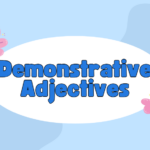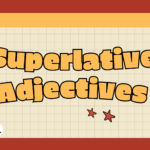Language is an ever-changing tool that lets us express ourselves in unique ways. One interesting aspect is the use of compound adjectives – a linguistic feature where two or more words come together to form a single descriptive term. In this blog, we’ll dive into what compound adjectives are, the types, and how to use them in a straightforward manner.
What are Compound Adjectives?
Compound adjectives forms when two or more words combine to create a hyphenated or single-word descriptor, acting as an adjective. This language technique helps convey more precise meanings by merging different elements into a unified description.
What are the Types of Compound Adjectives?
There are three main types based on the words they combine:
Noun + Noun (NN):
- Examples:
- ice-cold water
- time-consuming task
- technology-driven society
Adjective + Noun (AN):
- Examples:
- high-pitched sound
- dark-haired woman
- narrow-minded viewpoint
Adverb + Adjective (AA):
- Examples:
- well-known author
- fast-paced movie
- deeply-rooted tradition
How to make Compound Adjectives?
How you create compound adjectives depends on the relationship between the words. Here’s a breakdown:
- Hyphenated Compound Adjectives:
- Use a hyphen when combining words that jointly modify a noun.
- Example: a five-star hotel
- Closed or Solid Compound Adjectives:
- Combine words without spaces or hyphens into a single term.
- Example: textbook example
- Open Compound Adjectives:
- Keep the words separate when they work together as a descriptor.
- Example: real estate market
Examples of Compound Adjectives
Let’s look at examples from each type:
Noun + Noun (NN):
| Compound Adjective | Meaning |
|---|---|
| user-friendly interface | Easy to use for the intended audience |
| mountainous terrain | Characterized by large mountains |
| health-conscious lifestyle | A lifestyle focused on health |
Adjective + Noun (AN):
| Compound Adjective | Meaning |
|---|---|
| cold-hearted villain | A villain lacking empathy or warmth |
| bright-eyed student | A student with alert and eager eyes |
| smooth-talking salesman | A salesman skilled in persuasive talk |
Adverb + Adjective (AA):
| Compound Adjective | Meaning |
|---|---|
| highly-educated scholar | A scholar with extensive education |
| deeply-rooted tradition | A tradition with a strong historical foundation |
| swiftly-flowing river | A river that flows rapidly |
How to Use Compound Adjectives?
Let’s explore how to incorporate compound adjectives and provide examples for each type:
1. Noun + Noun (NN):
Rule: Combine two nouns to create a hyphenated compound adjective.
Examples:
- The chef prepared an oven-baked lasagna for the guests.
- We enjoyed a last-minute decision to go on a road trip.
- She received a promotion for her team-building efforts.
2. Adjective + Noun (AN):
Rule: Pair an adjective with a noun to form a compound adjective, usually without hyphens.
Examples:
- The movie featured a heartwarming story about friendship.
- He attended a university with a state-of-the-art science lab.
- We had a conversation about her mind-boggling experience.
3. Adverb + Adjective (AA):
Rule: Combine an adverb with an adjective, typically without hyphens.
Examples:
- The speaker gave a deeply insightful presentation on climate change.
- She received an award for her exceptionally creative artwork.
- We explored the surprisingly affordable options for our vacation.
Tips for Using Compound Adjectives in Sentences:
Placement: Compound adjectives usually come before the noun they modify.
- Incorrect: We bought a car red.
- Correct: We bought a red car.
Consistency: Maintain consistency in your use of hyphens within a compound adjective.
- Incorrect: She wore a well – tailored suit.
- Correct: She wore a well-tailored suit.
Clarity: Ensure that the compound adjective enhances clarity and doesn’t create confusion.
- Confusing: She had a three – bedroom apartment.
- Clear: She had a three-bedroom apartment.
Varying Length: Experiment with the length of compound adjectives for rhythm and emphasis.
- Short: The cat had blue eyes.
- Longer: The cat had startlingly blue eyes.
Frequently Asked Questions (FAQs)
Q1: What’s the difference between compound adjectives and regular adjectives?
Compound adjectives are formed by combining two or more words, while regular adjectives are single words that describe nouns. Compound adjectives provide more detailed and specific information by bringing multiple words together.
Q2: Do I always need to use hyphens with compound adjectives?
A: Not always. Hyphens are commonly used, especially when the compound adjective comes before the noun it modifies. However, some compound adjectives are written without hyphens or as a single word. Consistency in your writing style is key.
Q3: Can I create my own compound adjectives?
Yes, creating compound adjectives is a creative way to express yourself. Just ensure that your combination makes sense in the context and is clear to your audience.
Q4: What are Compound Adjectives?
Compound adjectives, formed by combining two or more words, enhance expression. Three types include Noun + Noun (NN), Adjective + Noun (AN), and Adverb + Adjective (AA). They can be hyphenated, closed, or open, offering nuanced descriptions. Examples and usage tips illustrate their role in creating precise and vivid language.
Q4: Are there specific rules for using compound adjectives in formal writing?
While compound adjectives can be used in formal writing, it’s essential to follow standard grammar and punctuation rules. Maintain consistency, be clear in your expression, and adhere to the guidelines of the writing style you are following (e.g., APA, MLA).
Q5: Can compound adjectives be used with any type of noun?
Yes, compound adjectives can modify various types of nouns, including common nouns, proper nouns, and pronouns. The key is to ensure that the compound adjective enhances the description of the noun in a meaningful way.
Conclusion
In conclusion, understanding and using compound adjectives contribute to the depth and clarity of language. By thoughtfully combining words, you can create expressions that capture the nuances of the world around you. Experiment with compound adjectives to refine your language use and communicate your ideas more effectively.


